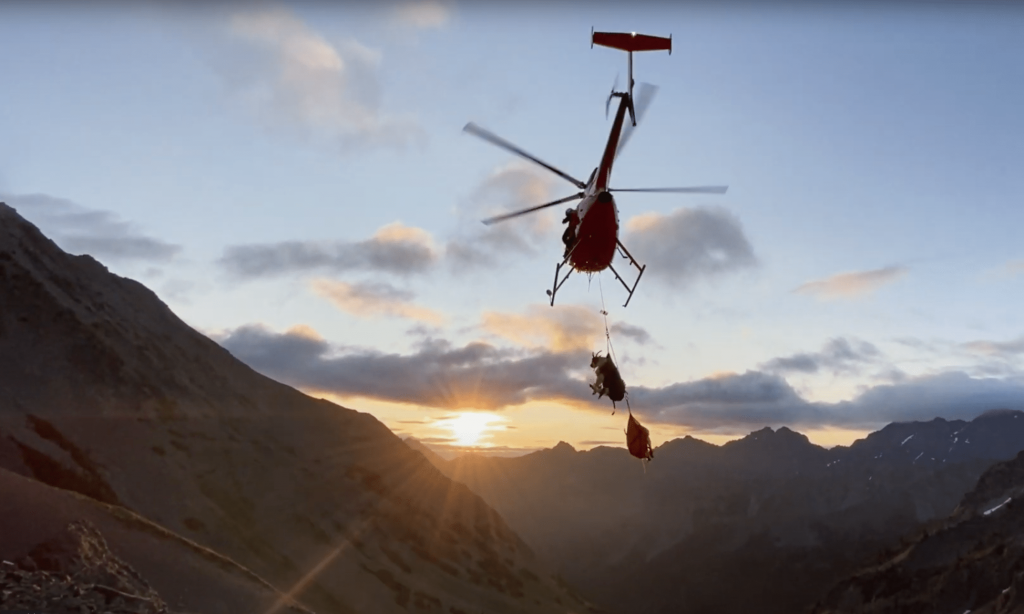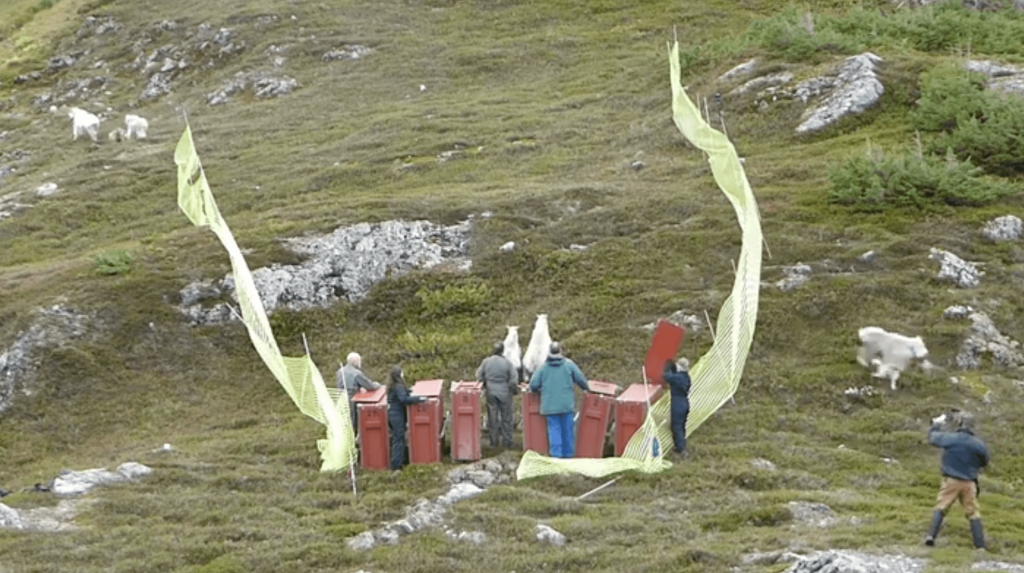
Olympic Mountain Goat Translocations Bolstered Cascades Herds With 325 Animals
State and federal wildlife managers have wrapped up a three-year effort to reduce mountain goat numbers in one Washington range and bolster herds in another, with 50 more of the animals translocated from the Olympics to the Cascades.

WDFW reports that a total of 325 of the nonnative animals were captured in the heights of the Olympic Peninsula since 2018 and released into the Mt. Baker-Snoqualmie and Okanogan-Wenatchee National Forests, where they joined diminished herds or recolonized vacant habitats, a win-win.
Another 56 kids, nannies and billies were sent to zoos, died during capture or transport, or were euthanized or lethally removed.
Partners from multiple agencies were assisted by numerous tribes and volunteers, while crews with two different helicopter companies flew the mountain goats out of their old home and into their new.

“I am extremely proud of the team and their hard work, dedication, and professionalism,” said Olympic National Park Superintendent Sarah Creachbaum in a press release. “Their commitment will have lasting impacts on ecosystem restoration in Olympic National Park and the native goat population in the Cascades.”

A WDFW news release said the goats became harder to catch in the late stages of the effort, with flight hours per capture rising from one per every .59 hour in 2018 to one/1.31 hour in 2020, and capture mortalities increasing from 5.2 percent to 9.1 percent.

Animals were released this year near Darrington, Snoqualmie Pass, Washington Pass, Lake Wenatchee and elsewhere.
Next up is for a “highly skilled group of volunteers” to try and kill the remaining holdouts in the core and eastern side of Olympic National Park in September and October.
More than 1,200 three- to six-person groups applied to do so last April, with just 21 WDFW- and NPS-vetted teams ultimately chosen.
It will be anything but a trophy or regular hunt, let alone a weekend at deer camp, rather an effort to “eradicate” a nonnative ungulate that is heavily impacting high-elevation vegetation and lands. It’s a task of momentous gravity.
And one that’s come full circle, in a sense. A dozen goats were introduced here for hunting beginning in the mid-1920s. Then in 1938 the mountains were declared a national park, which subsequently barred hunting.
“The task at hand will be challenging, as it will require them to methodically search through some of the most rugged and vast areas of the park to find the few hundred goats that remain,” Brock Hoenes, WDFW’s ungulate manager told me last week.



An estimated 725 goats lived on the peninsula when the operation began; in 2021 and 2022 aerial crews are expected to cull any that are left.
